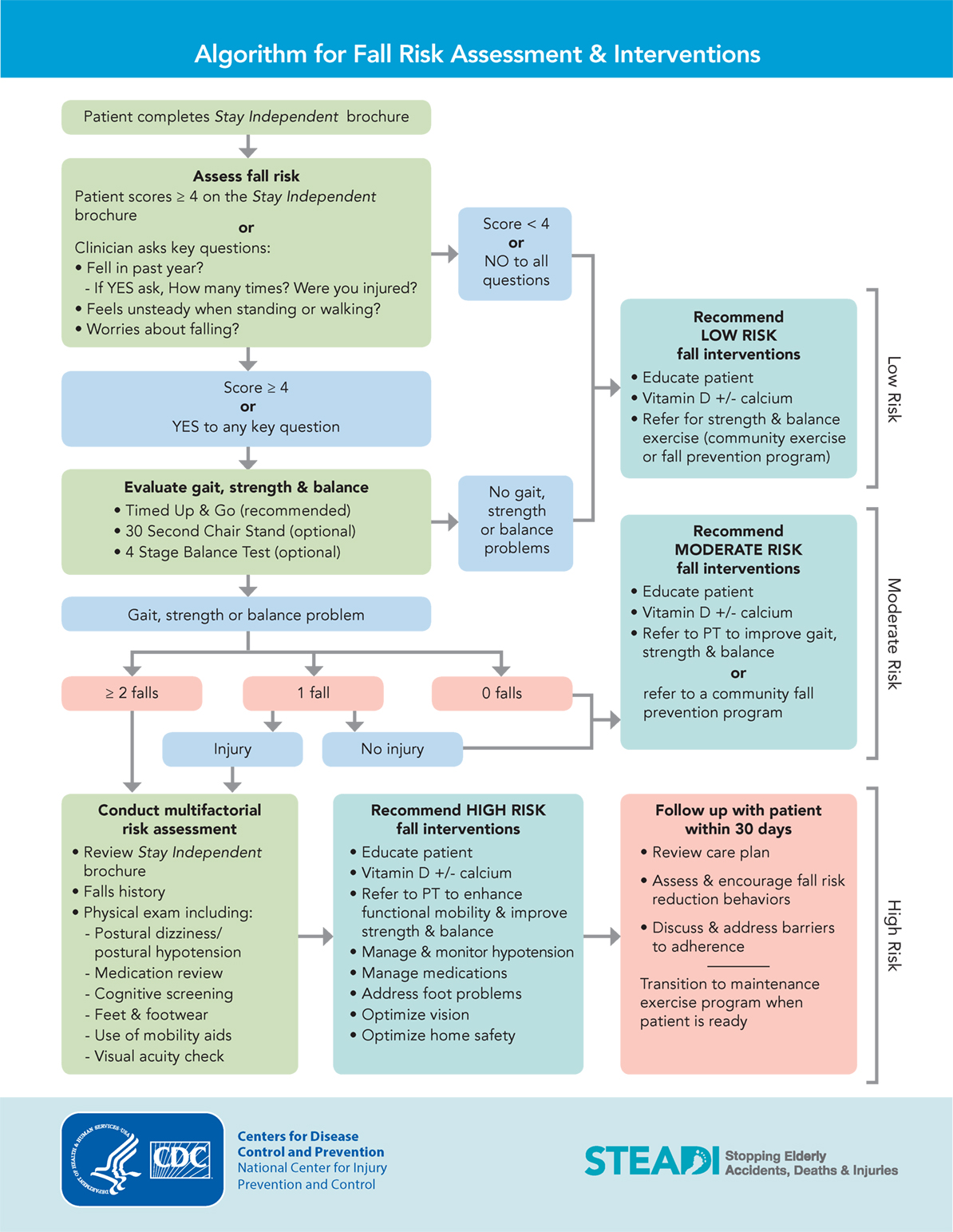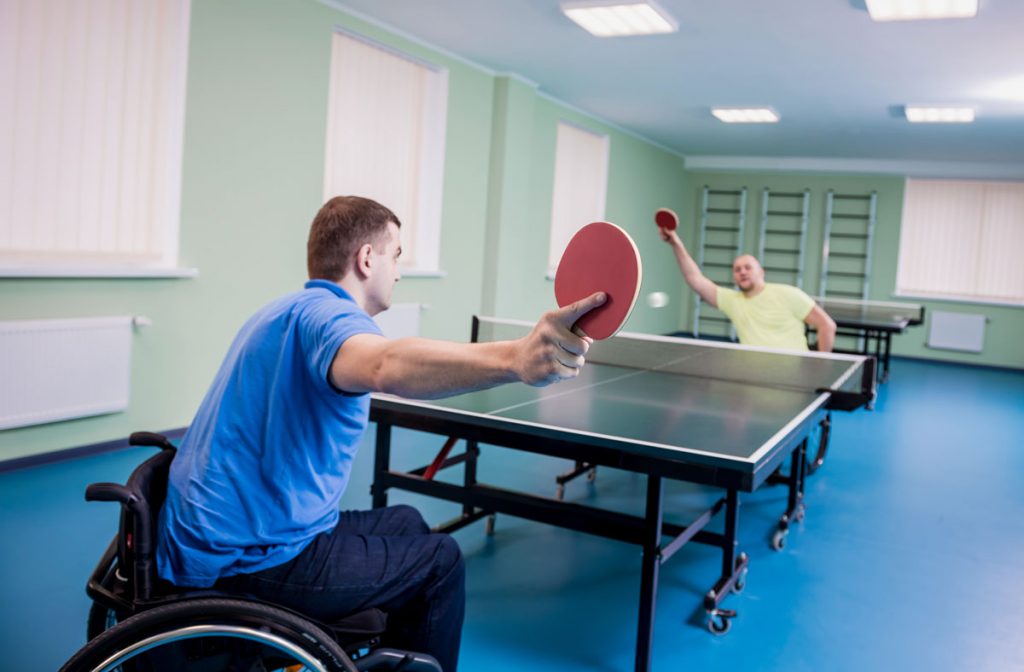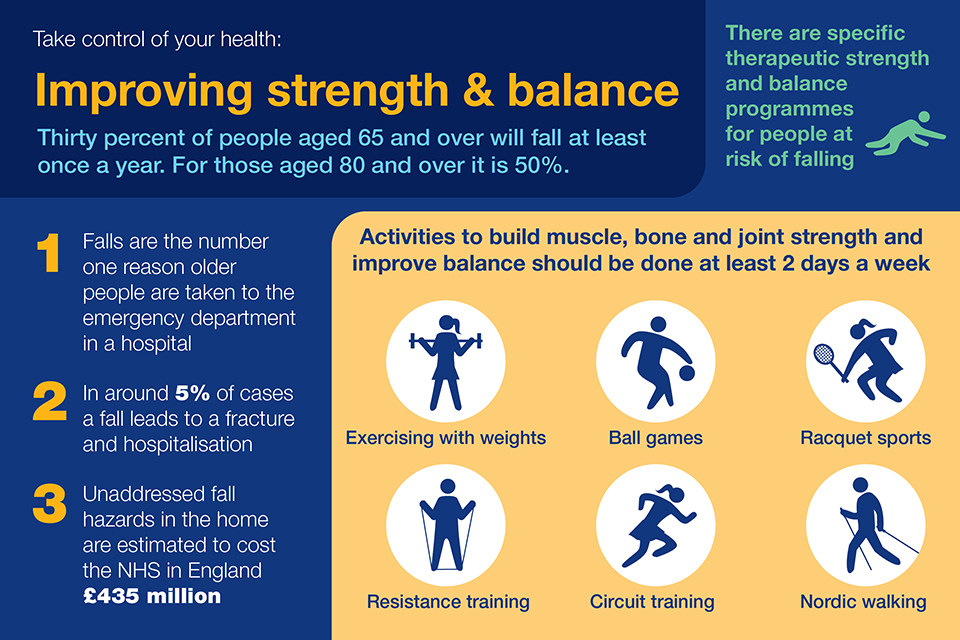Dementia Fall Risk Can Be Fun For Everyone
Dementia Fall Risk Can Be Fun For Everyone
Blog Article
The Facts About Dementia Fall Risk Uncovered
Table of ContentsAll About Dementia Fall RiskThe 5-Minute Rule for Dementia Fall RiskThe Single Strategy To Use For Dementia Fall RiskDementia Fall Risk Fundamentals Explained
An autumn threat evaluation checks to see just how most likely it is that you will fall. It is primarily provided for older grownups. The analysis typically includes: This includes a collection of concerns regarding your overall health and wellness and if you've had previous drops or troubles with equilibrium, standing, and/or walking. These tools test your toughness, equilibrium, and gait (the way you stroll).STEADI consists of testing, examining, and intervention. Treatments are suggestions that may minimize your risk of dropping. STEADI includes three steps: you for your danger of succumbing to your danger factors that can be boosted to attempt to stop falls (for instance, equilibrium issues, damaged vision) to minimize your threat of falling by making use of efficient strategies (for instance, providing education and sources), you may be asked several concerns consisting of: Have you fallen in the past year? Do you really feel unsteady when standing or walking? Are you bothered with falling?, your supplier will evaluate your toughness, balance, and gait, making use of the following autumn analysis devices: This test checks your gait.
If it takes you 12 seconds or more, it might imply you are at higher risk for a loss. This examination checks toughness and equilibrium.
The positions will certainly obtain harder as you go. Stand with your feet side-by-side. Relocate one foot halfway forward, so the instep is touching the big toe of your other foot. Relocate one foot completely in front of the other, so the toes are touching the heel of your other foot.
The Best Strategy To Use For Dementia Fall Risk
The majority of falls occur as a result of multiple adding elements; therefore, managing the threat of dropping starts with recognizing the variables that add to drop threat - Dementia Fall Risk. A few of one of the most pertinent threat variables include: History of prior fallsChronic medical conditionsAcute illnessImpaired stride and balance, reduced extremity weaknessCognitive impairmentChanges in visionCertain high-risk medicines and polypharmacyEnvironmental variables can likewise raise the risk for drops, including: Poor lightingUneven or harmed flooringWet or unsafe floorsMissing or damaged hand rails and get hold of barsDamaged or poorly fitted tools, such as beds, wheelchairs, or walkersImproper usage of assistive devicesInadequate guidance of the individuals residing in the NF, including those that exhibit aggressive behaviorsA successful autumn risk management program calls for a detailed scientific analysis, with input from all participants of the interdisciplinary team

The care plan must additionally consist of interventions that are system-based, such as those that advertise a secure atmosphere (suitable illumination, hand rails, get bars, etc). The efficiency of the interventions must be evaluated occasionally, and the treatment plan revised as needed to show modifications in the fall risk analysis. Carrying out a fall danger management system utilizing evidence-based ideal method can lower the prevalence of falls in the NF, while limiting the potential for fall-related injuries.
Some Ideas on Dementia Fall Risk You Need To Know
The AGS/BGS standard suggests screening all adults aged 65 years and older for loss danger every year. This testing includes asking patients whether they have dropped 2 or even more times in the previous year or sought medical focus for a fall, or, if they have actually not dropped, whether they really feel unstable when walking.
Individuals who have actually dropped when without injury ought to have their equilibrium and stride evaluated; those with gait or balance problems must obtain extra assessment. A history of 1 fall without injury visite site and without stride or balance issues does not call for further evaluation past continued yearly autumn threat screening. Dementia Fall Risk. A loss danger assessment is needed as component of the Welcome to Medicare exam

Not known Details About Dementia Fall Risk
Recording a falls history is one of the quality signs for loss avoidance and administration. An important part of threat assessment is a medication review. Several courses of drugs enhance autumn danger (Table 2). copyright drugs particularly are independent predictors of falls. These medications often tend to be sedating, alter the sensorium, and Continue harm balance and gait.
Postural hypotension can commonly be alleviated by minimizing the dose of blood pressurelowering medicines and/or stopping medications that have orthostatic hypotension as an adverse effects. Use above-the-knee assistance hose pipe and copulating the head of the bed elevated might likewise reduce postural decreases in high blood pressure. The advisable aspects of a fall-focused checkup are received Box 1.

A TUG time higher than or equal to 12 secs suggests high loss danger. The 30-Second Chair Stand test examines lower extremity toughness and balance. Being incapable to stand up from a chair of knee visit their website height without making use of one's arms suggests raised autumn danger. The 4-Stage Balance examination examines fixed equilibrium by having the patient stand in 4 positions, each considerably much more challenging.
Report this page